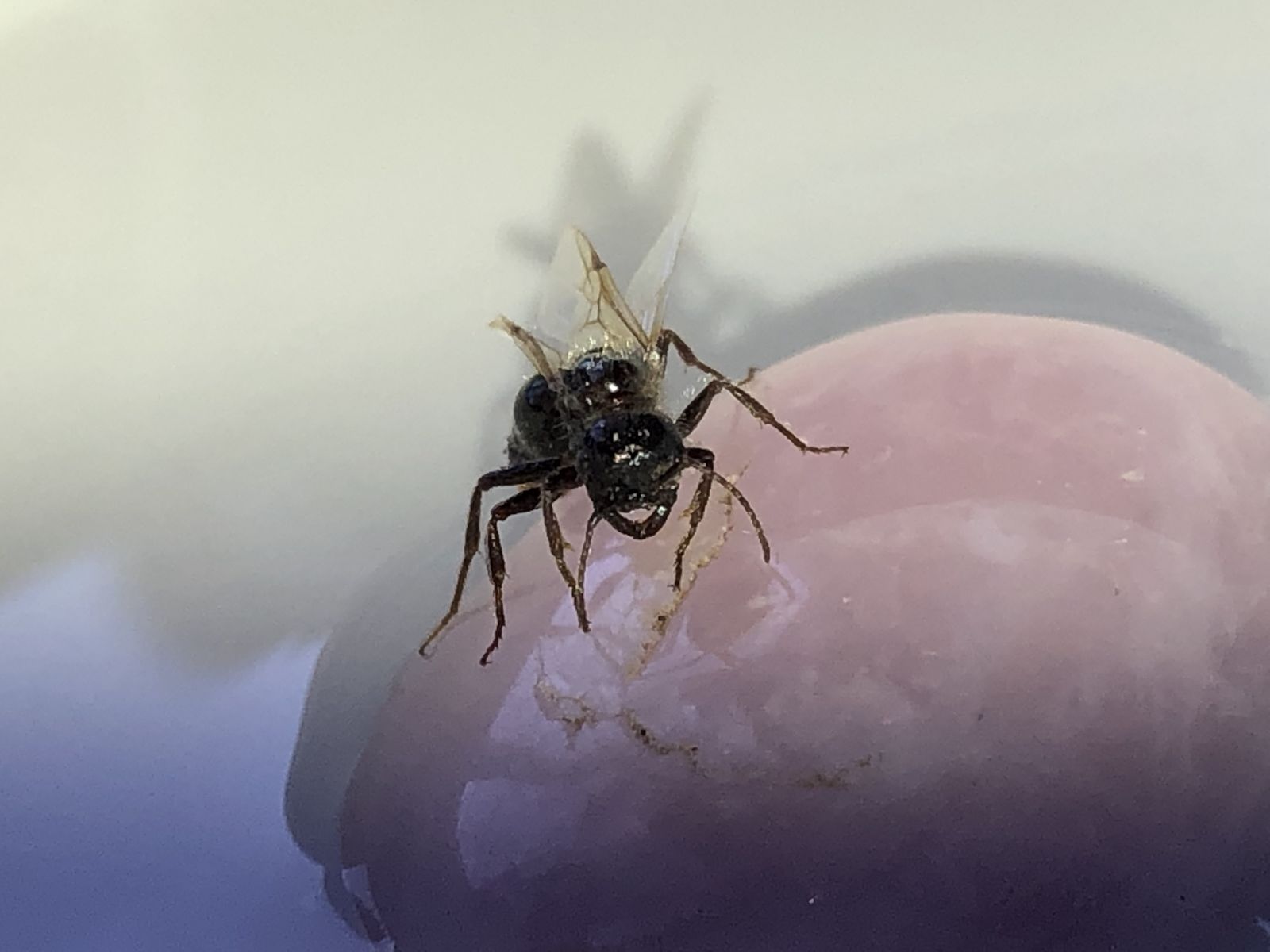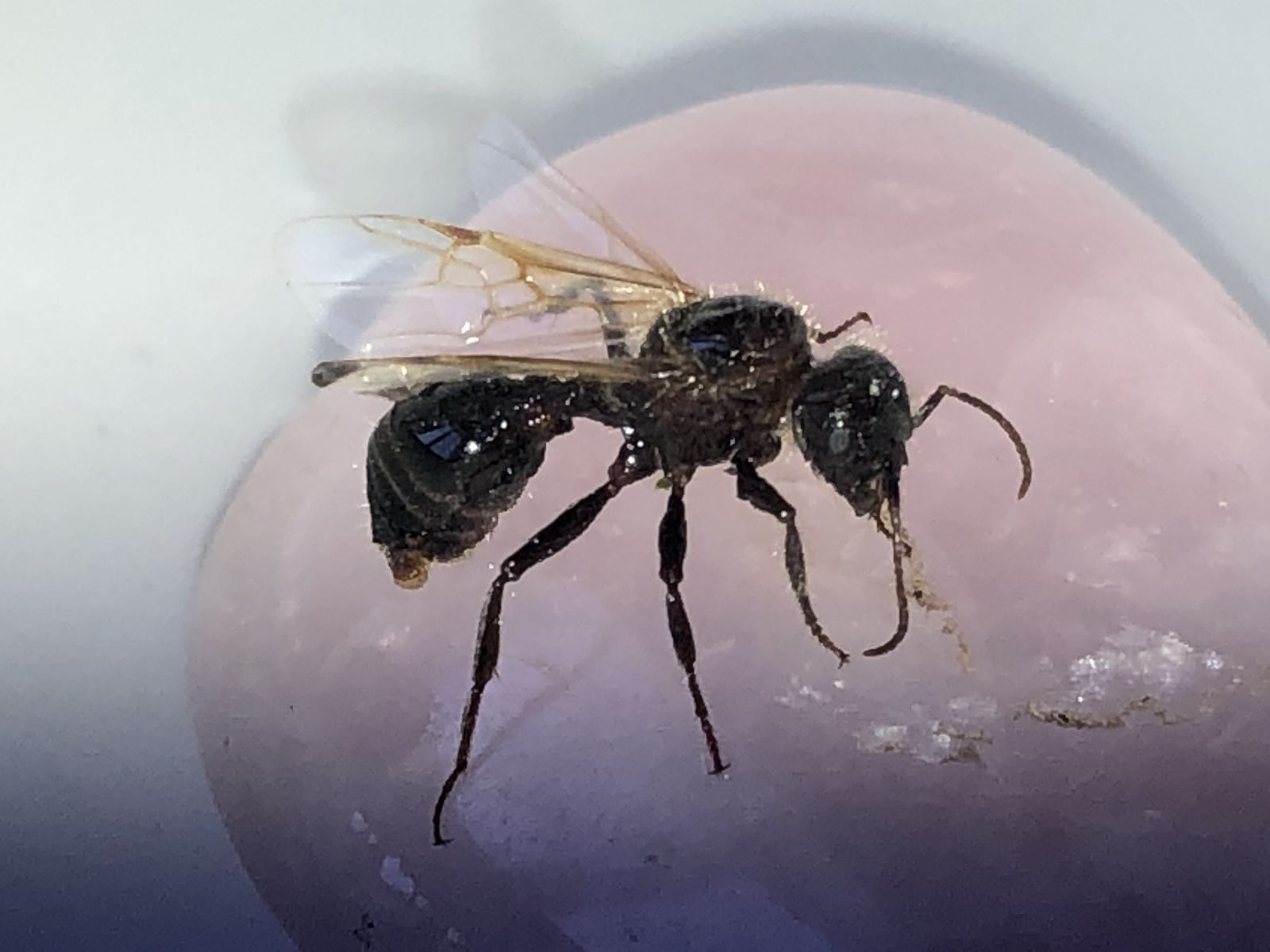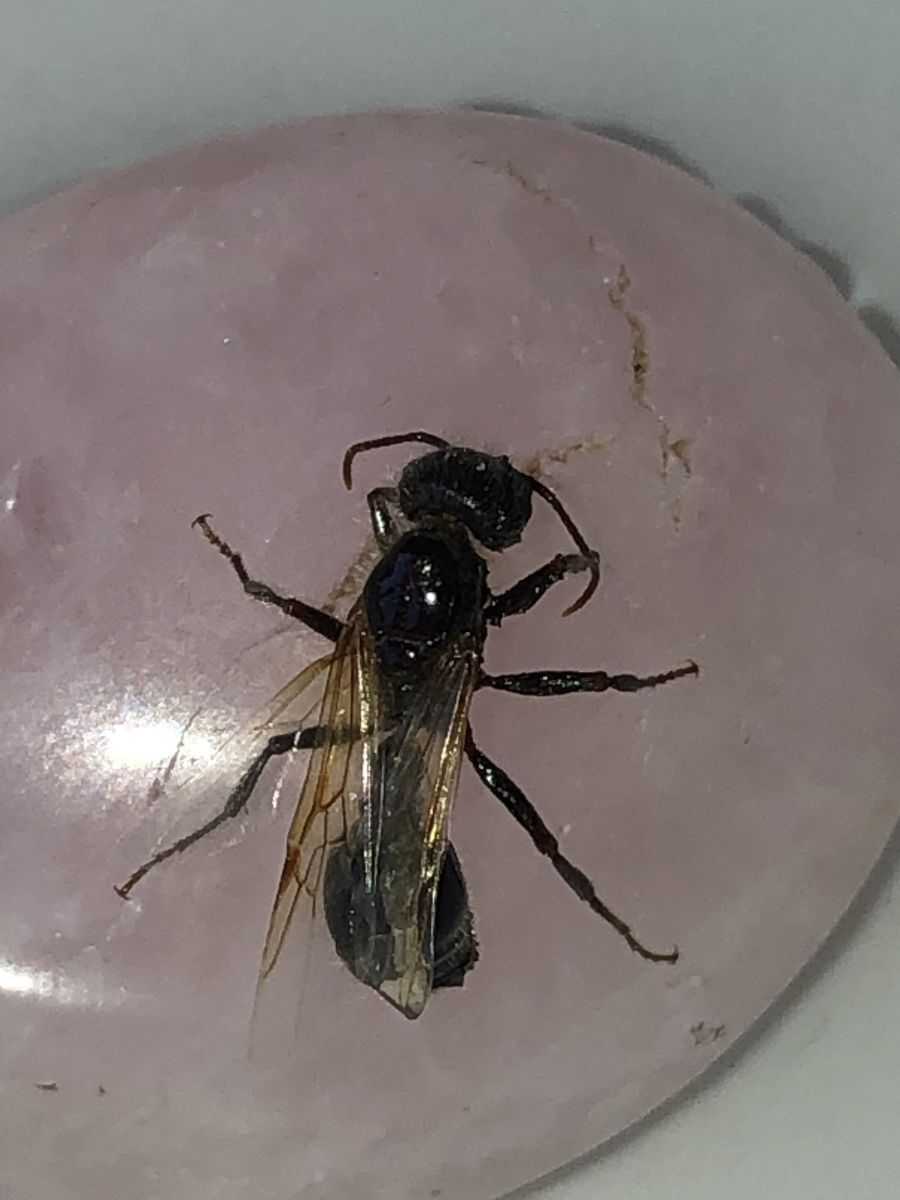1. Location (on a map) of collection: Tucson, Arizona.
2. Date of collection: 8.4.2019 at night
3. Habitat of collection: Urban desert scrub habitat. Specifically, this ant was found crawling on my bed.
4. Length (from head to gaster): 13mm
5. Color, hue, pattern and texture: Very dark brown/black color. Shiny rather than matte. Has fine yellow hair covering body, but most apparent on head. Short yellow hairs on underside of head.
6. Distinguishing characteristics: This ant has an interesting pair of jaws. The mandibles are long, slender, and pointy. They form a hollow triangle shape when closed. From a head on view, her mouth parts can be seen through the gap in her mandibles. Appear to be more effective for piercing rather than crushing or chewing. She also has two petiole nodes, and her head is wider than it is tall.
7. Distinguishing behavior: This ant does not appear to be a good climber on smooth surfaces. She has significant trouble finding footing in her tube setup.
8. Nest description: —
9. Nuptial flight time and date: —






















